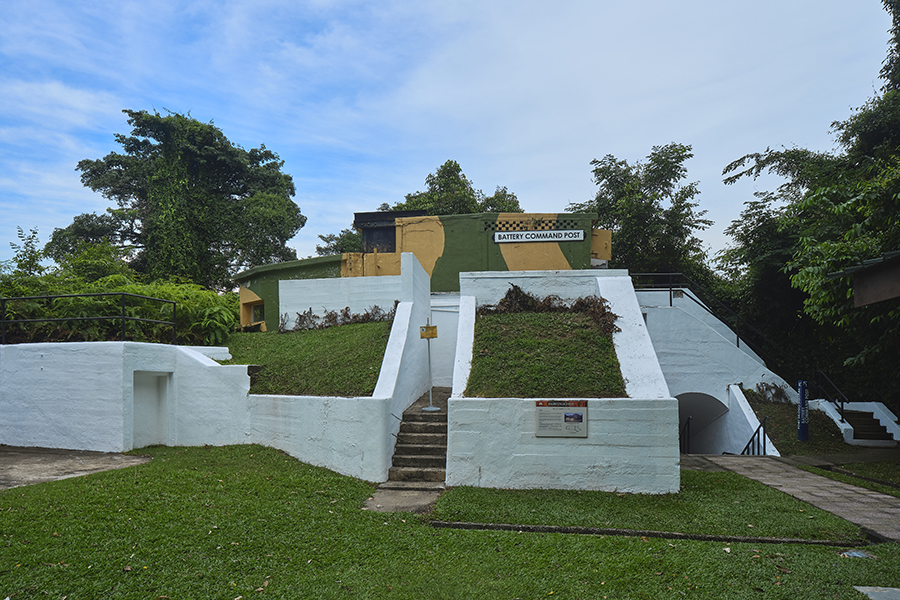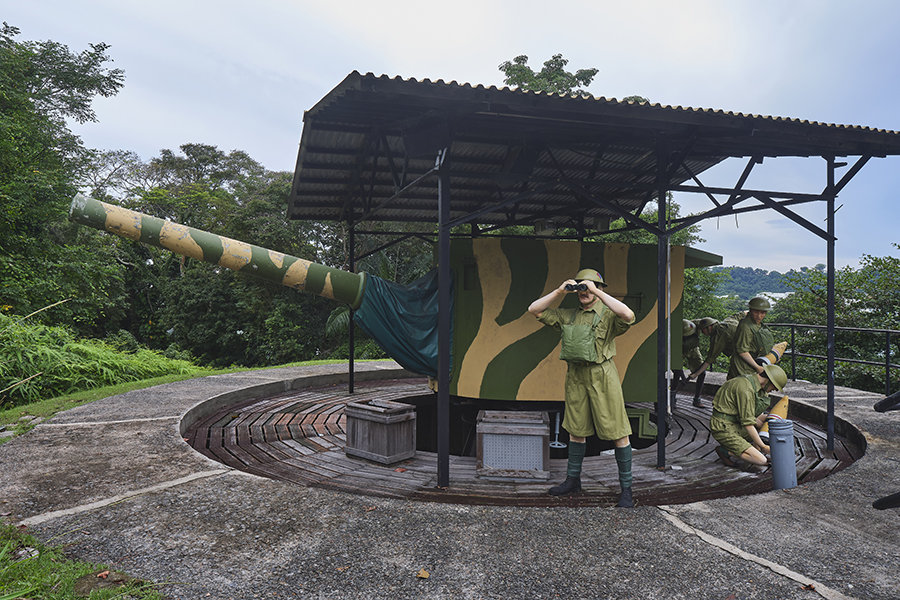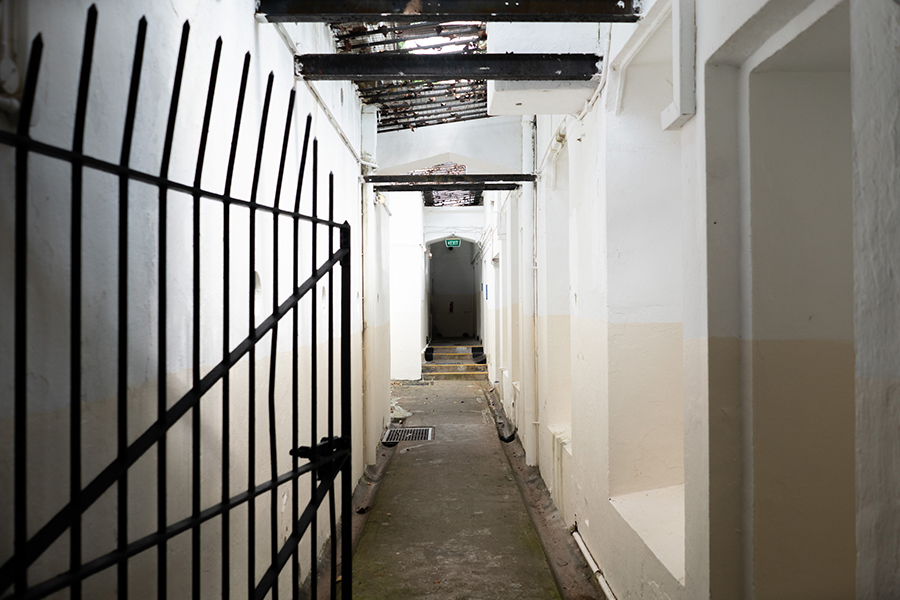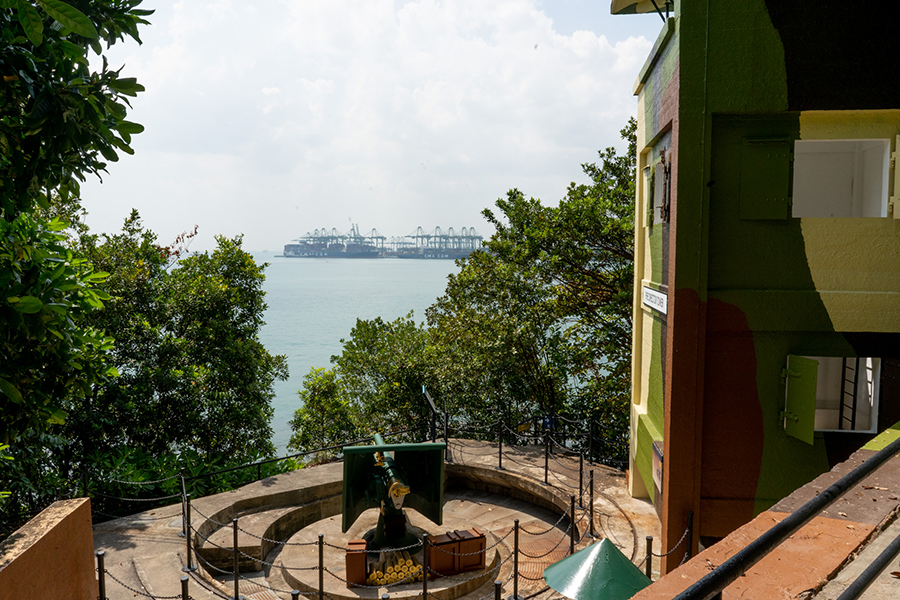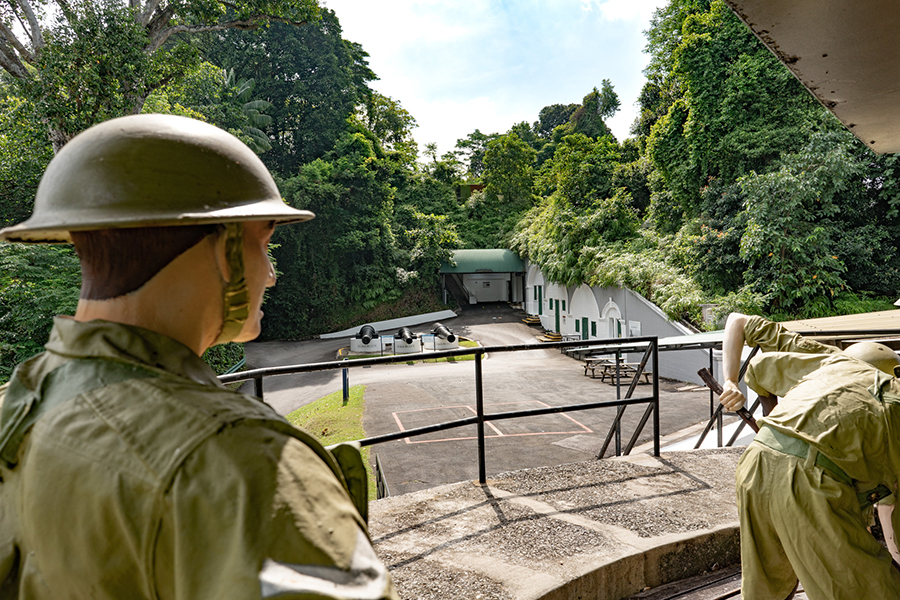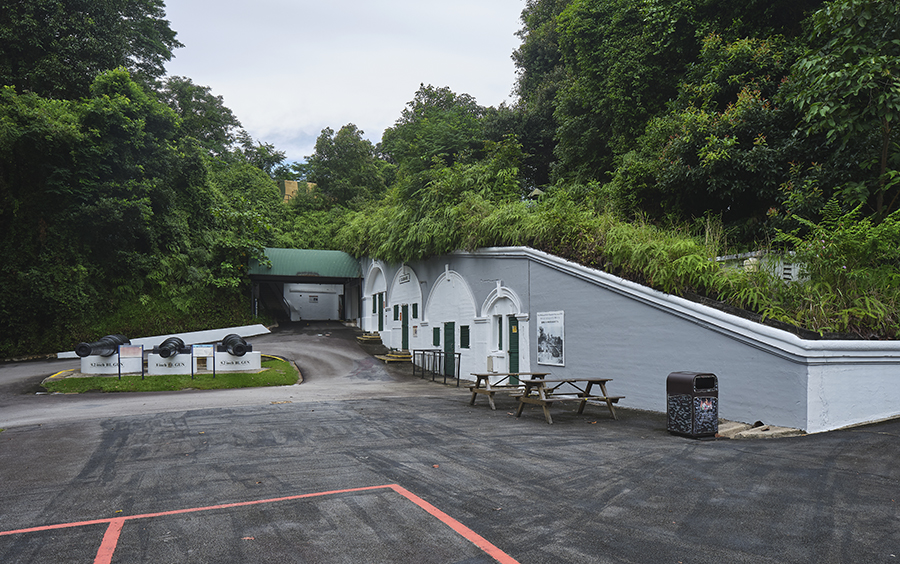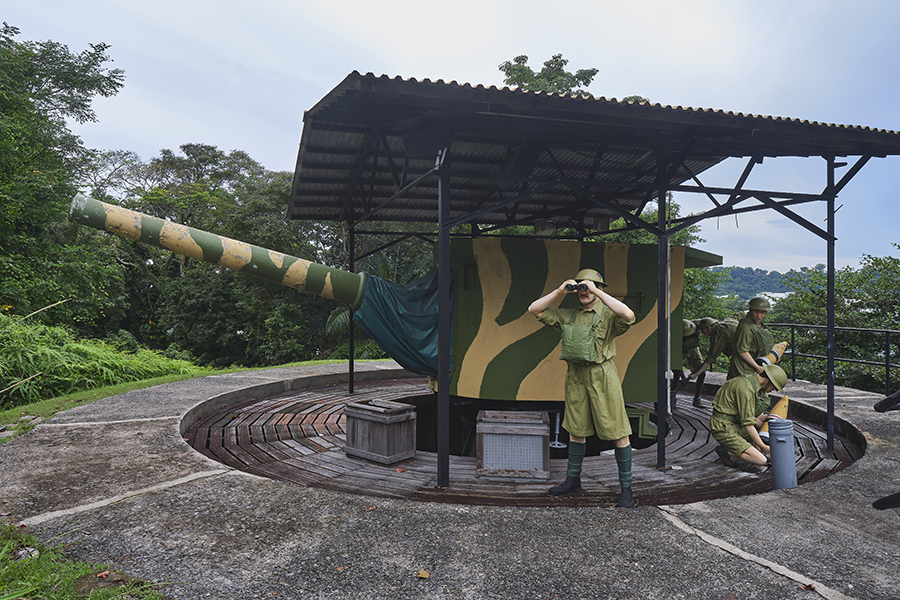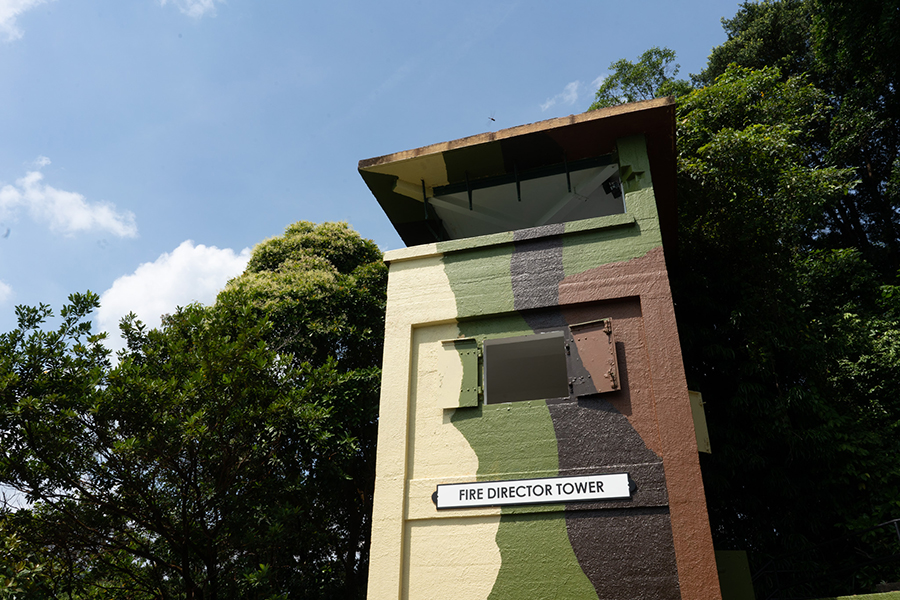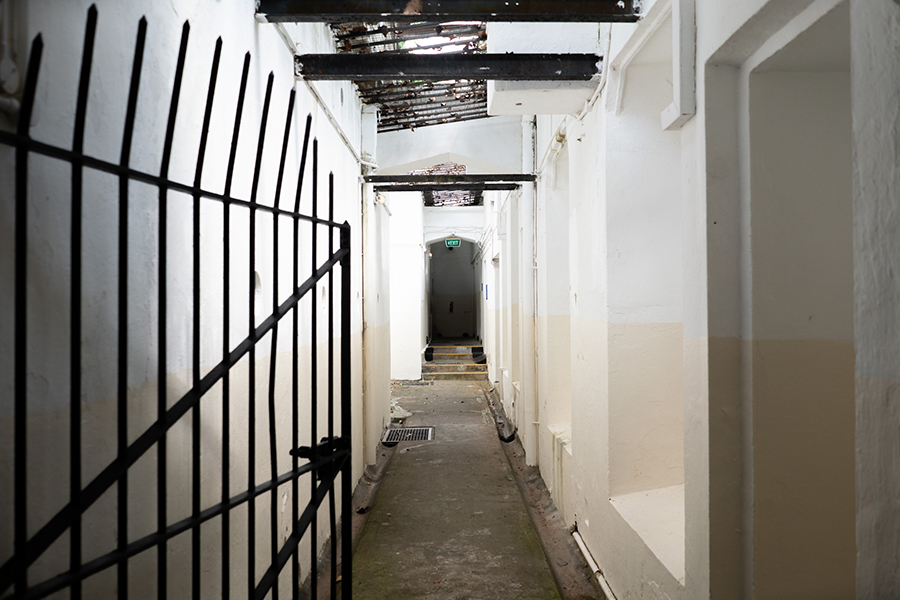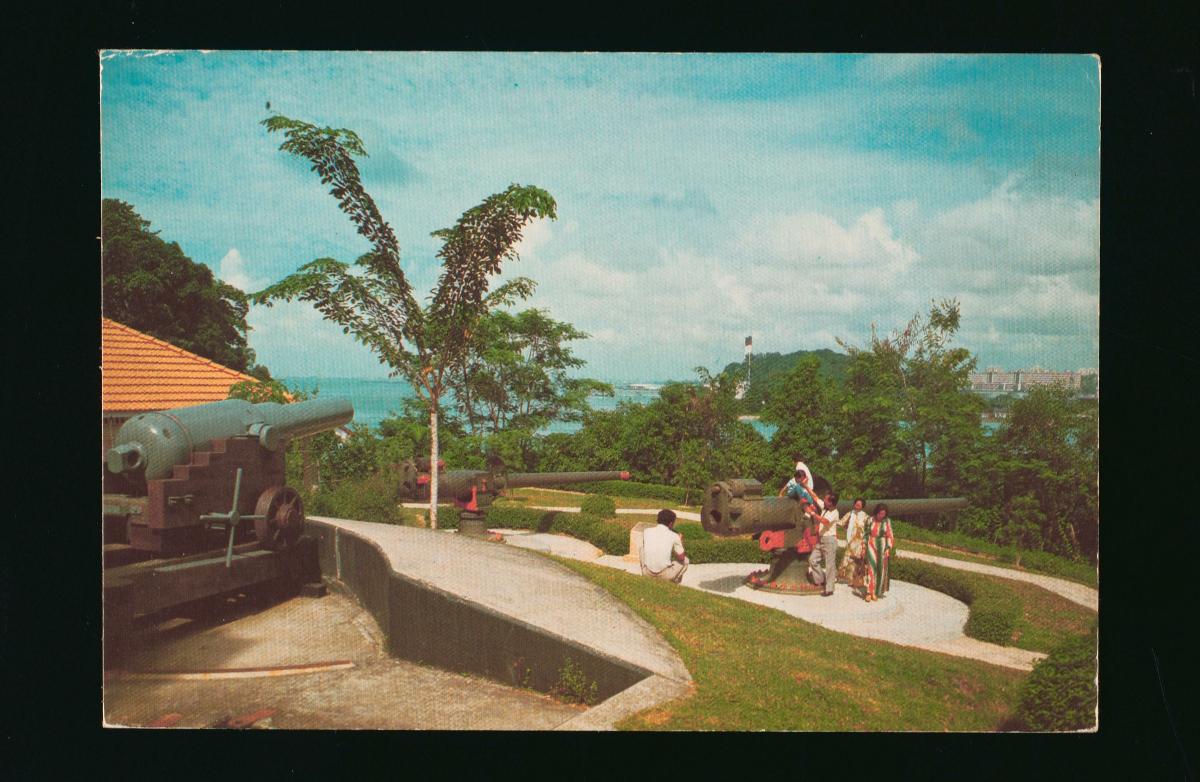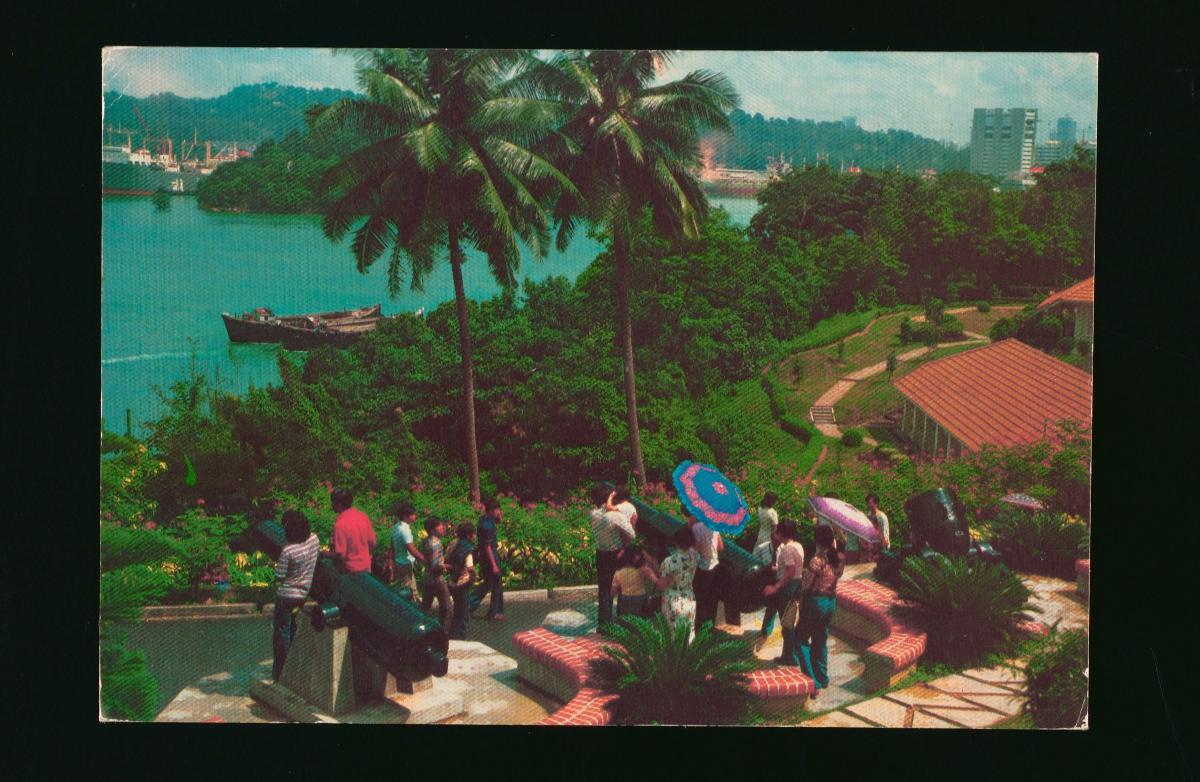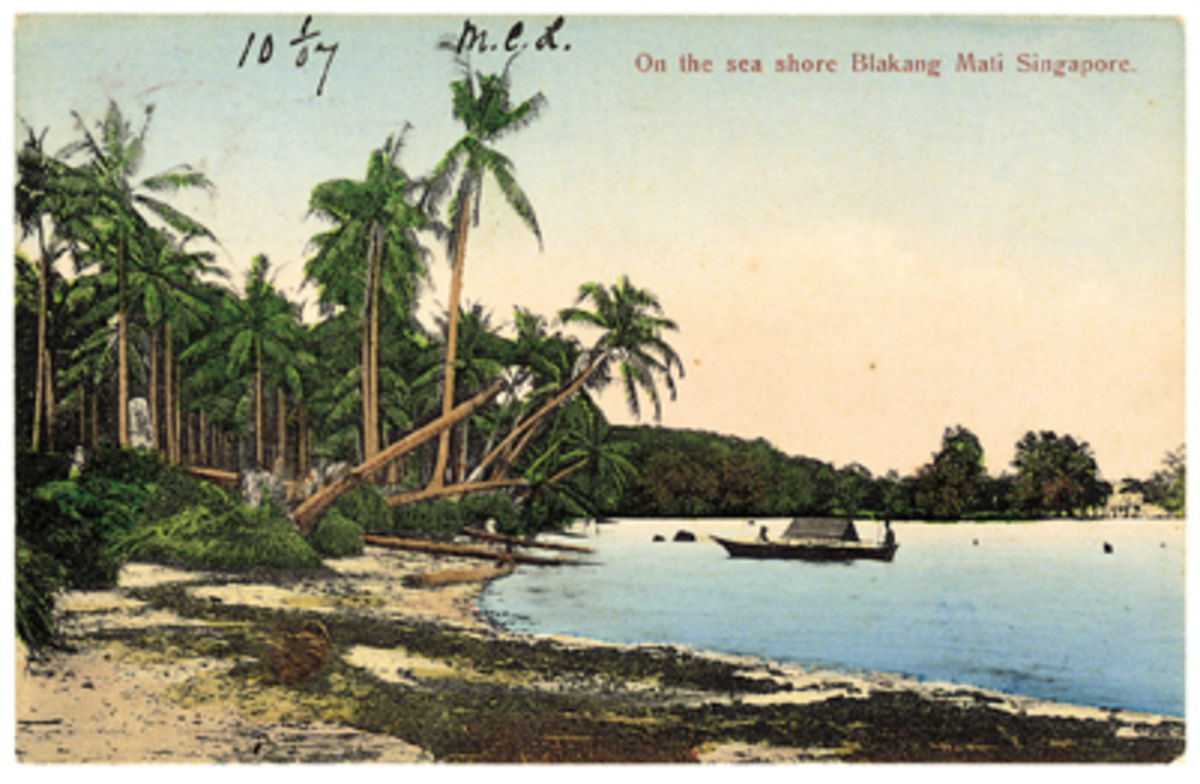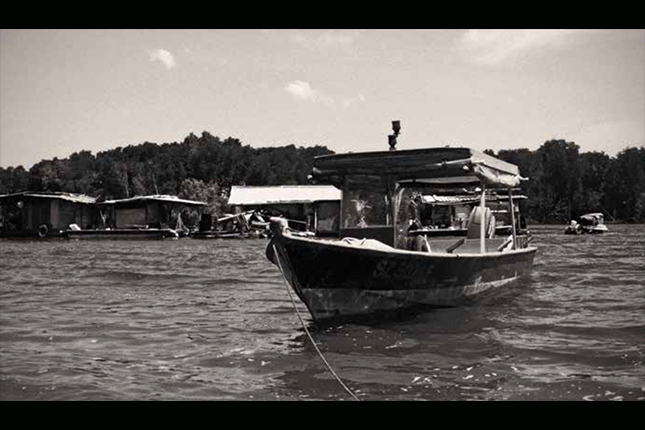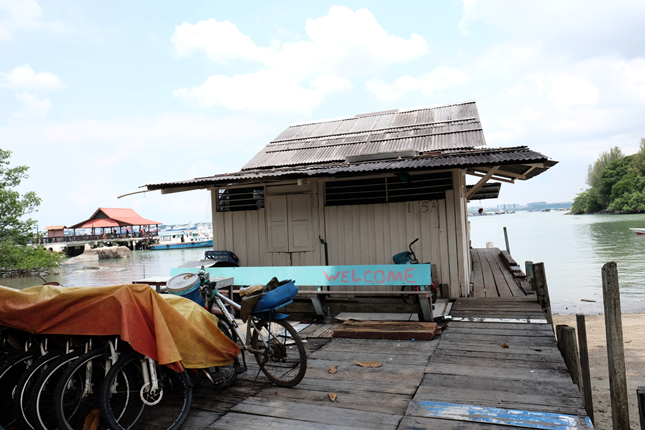Gazette Date: 15 February 2022
Located on the western tip of Pulau Blakang Mati (known today as Sentosa Island), Fort Siloso was one of the many coastal fortifications built around the 19th century by the British and remains the most intact fortification in Singapore. The Fort was built on Mount Siloso, where the name “Siloso” is said to be derived from a Malayan word meaning “rock”, a possible reference to the rock outcrops that once stood at the western entrance to the present-day Keppel Harbour.
Built in 1878, it was one of three forts (the other two being Fort Connaught and Fort Serapong) that had been constructed on the island to protect the New Harbour (later renamed Keppel Harbour) and the straits around Singapore. The Fort played an important role in the Battle for Singapore and served as a Prisoner-of-War camp during and after the Japanese Occupation. In summary, the Fort performed a key defence function and bears testimony to Singapore’s military and war history.
Coastal Defence Network
Fort Siloso includes artillery and anti-aircraft emplacements, as well as machine guns, searchlights and command posts. There is also an extensive network of underground complexes (referred to as Tunnel Complexes A, B, C) as well as casemates built into the hill.
Gun Emplacement
(Image from National Heritage Board)
Tunnel A Complex
(Image from National Heritage Board)
It was part of one of the first coastal defence networks in the world that deployed multiple coordinated gun positions over several forts. This network included Fort Siloso, Fort Pasir Panjang, Fort Connaught and Fort Serapong. Together with Fort Tanjong Katong, they were all commissioned at the same time as part of a large-scale extension of Singapore’s defences to safeguard Singapore’s position as a strategic trading port. Preceding these Forts are Scandal Point (1819), Fort Fullerton (1830), Fort Canning (1859), Fort Faber (1859), Fort Palmer (1859) and Fort Teregah (1861).
Open Artillery Battery Design
Designed by Colonial Engineer Henry McCallum, Fort Siloso was one of the first in the world to adopt the new open artillery battery design, where gun emplacements were no longer confined within the walls of a fort. Compared to traditional fort design which features heavily fortified buildings in a fixed geometric layout, this new open concept was more effective as the guns can be deployed more freely as individual battery units at different positions to cover larger arcs of fire. The random gun placements also made it difficult for the enemy to discern the exact layout of the fort and how to engage it. Another feature of this new open concept was the incorporation of underground structures such as casemates and magazines near or beneath these gun placements.
Upgrades and Redevelopment
The earliest artillery emplacements here consisted of earthwork batteries housing three 7-inch rifled muzzle-loading guns and two 64-pounder rifled muzzle-loading guns. However, within a few years, these guns became inadequate to deal with the threat of ironclad warships. By the 1890s, quick-firing and breech-loading guns, which had a faster rate of fire, were added and armed with high-explosive and armour-piercing shells. The gun array would be upgraded several times till the eve of World War II.
To prepare for war, Fort Siloso underwent a major redevelopment during the 1930s and early 1940s. At Siloso Point, an anti-motor torpedo boat (AMTB) emplacement with a 12-pounder quick firing gun, named OSO Battery, was also constructed to combat fast-moving small vessels from raiding Keppel Harbour from the west. Improvement works included the addition of a three-storey fire director tower, machine guns, searchlights and observation posts to monitor the straits and coordinate artillery fire. The underground infrastructure housed magazines, tunnels and a powerhouse that provided electricity to the Fort. Submarine electro-contact mines and ground mines were also laid off the northern coast.
Fire Director Tower
(Image from National Heritage Board)
Battle for Singapore
During the Battle for Singapore (8 - 15 February 1942), Fort Siloso was one of two known busiest batteries (the other being Fort Connaught) on Pulau Blakang Mati. Although the guns on Fort Siloso and the other forts on the island were designed to protect Singapore from a sea invasion, most of the guns had all-round or near all-round traverse that allowed them to be turned landwards to engage the invading Japanese troops. However, the ammunition available were mainly armour-piercing shells, which were designed to inflict maximum damage on warships and were markedly less effective against infantry targets.
Despite suffering heavy bombing, the guns of Fort Siloso engaged the enemy at the western end of the island, in particular at West Coast Road and Jurong River, from 11 February 1942. On 13 February 1942, Fort Siloso, together with Labrador Battery, provided supporting fire for the defending forces, which included the 1st Battalion, Malay Regiment. This enabled the defending forces to withstand attacks from the Japanese 18th Division. Its guns also destroyed oil storage facilities at nearby Pulau Bukom and Pulau Sebarok to prevent the Japanese from using the oil for their war purposes.
On the eve of the fall of Singapore, at 5 a.m. on 14 February 1942, the battery at Fort Siloso was deliberately destroyed by the British to prevent the Japanese forces from using the Fort.
Prisoners-of-War Camp
During the Japanese Occupation, Fort Siloso, like the rest of Pulau Blakang Mati, served as a Prisoners-of-War camp for the Australians and the British. After the Japanese surrendered in 1945, Fort Siloso was returned to the British and became a Prisoners-of-War camp for the Japanese.
Post-War Developments
After the Japanese surrender in 1945, Fort Siloso was manned by the Royal Artillery and the 1st Malay Coast Battery. The guns at Fort Siloso and other forts on Pulau Blakang Mati became non-operational after 1957 when the British government decided to phase out fixed coastal artillery defences, and the Fort was later manned by Gurkha detachments.
During the Konfrontasi period (1963-1966) when Indonesia launched confrontational operations to oppose the formation of the Federation of Malaysia, the 10th Gurkha Rifles Unit at Fort Siloso stood guard to prevent Indonesian saboteurs from landing on Sentosa and Keppel Harbour.
When the British forces withdrew from Singapore in 1967, Fort Siloso came under the command of the Singapore Armed Forces.
Fort Siloso Today
Since 1974, Fort Siloso has functioned as an outdoor military museum with an exhibition gallery after Pulau Blakang Mati was renamed Sentosa and redeveloped as a resort destination.
The gazette boundary of Fort Siloso includes 11 structures consisting original Casemates of an early-19th century design; four Gun Emplacements; three Tunnel Complexes that functioned as underground magazines directly beneath the guns, illustrating advances in military design in the late 19th century; key defensive structures such as the Battery Command Post and the Fire Director Tower with Searchlight Posts; and the former Sergeants’ Mess and Officers’ Mess which provide a picture of how soldiers lived in a fort.
View of the Casemates
(Image from National Heritage Board)
Its collection of fortifications and guns continue to serve as a reminder of the island’s history as a naval stronghold and the Fort’s important role in the defence of Singapore.
Our National Monuments
Our National Monuments are an integral part of Singapore’s built heritage, which the National Heritage Board (NHB) preserves and promotes for posterity. They are monuments and sites that are accorded the highest level of protection in Singapore.




